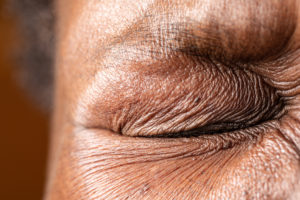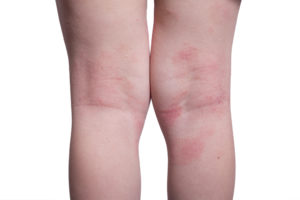
The food we consume everyday contains many natural and artificial additives. Most of these additives to food are chemicals and biological substances. In most of the cases, they are usually either preservatives or coloring substances.
Though additives have been used for hundreds of years, there has been an increase in the number and variety of substances added to food in the past few decades. The Food and Drug Administration (FDA) lists more than 4,000 different additives on their Food Additive and Color Additive lists.
Some of us can be “intolerant” to food additives, however, food additives may cause both immediate (i.e., symptoms beginning within a few minutes of eating food) and/or delayed (i.e., symptoms beginning several hours after eating food) hypersensitivity reactions. Immediate reactions are mediated by an antibody called IgE and delayed reactions are usually caused by T-lymphocytes (i.e., T-cells). The exact mechanism of reactivity however, may be unknown in a number of reactions caused by the additives.
Two common additives found in food in the U.S. that need special mention include sulfites and food dyes.
Sulfites:
Sulfites are one of the most commonly used preservatives for foods. They reduce spoilage and prevent fruit and vegetable browning. They also have some beneficial anti-oxidant properties. Sulfites are present in dried fruits in high quantities. They are also usually added to baked goods, shrimp, and condiments. Sulfites are also present in several varieties of wines and beers.
There are many case reports of sulfites causing hives (i.e., urticaria), angioedema (i.e., soft tissue swellings), and flare-ups of asthma. The FDA now requires that most preservatives, including sulfites, be cleared mentioned in the food labels. Sulfites can appear as alternate verbiage on product labels and can be written as potassium bisulfite, potassium metabisulfite, sodium bisulfite, sodium metabisulfite, or sodium sulfite.
Sulfite, sulfa, sulfate, and sulfur are 4 terms that sound very similar but are very different when it comes down to their allergy profile. Sulfa drugs contain the sulfonamide molecule and are typically broken down to sulfonamide antimicrobials (i.e., antibiotics) and sulfonamide non-microbials. The chemical structures are different between the sulfonamide antimicrobials and the sulfonamide non-microbials and thus individuals who have allergic reactions to one group should not have allergic reactions to the other group of sulfonamides. It should be noted that approximately 3% of individuals are allergic or have adverse effects from sulfonamide antimicrobials. The sulfonamide antibiotics may include sulfamethoxazole (i.e., Bactrim, Septra), sulfafurazole, sulfisoxazole (i.e., Pediazole), and sulfadiazine. The non-microbial sulfonamides may include Celebrex (i.e., celecoxib), Lasix (i.e., furosemide), Microzide (i.e., hydrochlorothiazide), Imitrex (i.e., sumatriptan), Amaryl (i.e., glimepiride), and Diabeta (i.e., Glyburide).
Sulfates are present in many medications (i.e., magnesium sulfate, ferrous sulfate), supplements (i.e., glucosamine sulfate), and personal care products (toothpaste, shaving foam, shampoo). Sulfates are different chemically from sulfites and sulfa drugs and are unlikely to cause allergic reactions.
Sulfur is a chemical element and omnipresent. It is thus practically impossible to have an allergy to sulfur.
Food Dyes:
Carmine is a coloring agent present in red-colored foods. It is extracted from the insect known as the cochineal. It is known as “cochineal extract” or “natural red 4.” It has been shown to cause facial swelling, rashes, wheezing, and/or anaphylaxis.
Saffron, annatto, and yellow dye # 5 are added to foods to color them yellow. Saffron is a spice that has been around for thousands of years. It can be toxic in larger quantities. An allergy to saffron is known to cause itching, skin irritation, rashes, redness of the skin, and hives. Annato comes from the seeds of the achiote tree and can be found in some cereals, drinks, cheeses, and snack foods. It has been shown to cause rashes and anaphylaxis is some individuals. Yellow dye # 5 (i.e., tartrazine) is known to cause hives and angioedema is selected individuals. It is also known to trigger asthma in some individuals.
It is important to note that any food dye may cause allergic reactions in susceptible individuals. Although food dye allergies are not too common, it is important to be aware that reactions such as itchy skin, redness of the skin, hives, angioedema, and anaphylaxis may occur.
DIAGNOSIS:
If one experiences untoward reactions to many different unrelated foods or if reactions occur only after eating commercially packaged foods, sensitivity to the additives should be suspected. Maintaining a food and symptom diary can be helpful in narrowing down the additive in question by establishing a temporal relationship between exposure and the onset of adverse effects.
Skin prick testing or blood testing are not useful in the diagnosis of food additive sensitivity; however, they may be useful in ruling out specific foods. Oral food challenges are usually helpful in the diagnosis. In this procedure, foods are eaten in small increments at regular intervals, beginning with a tiny quantity, while closely monitoring for adverse reactions under controlled circumstances with standardized protocols to treat an allergic reaction.
PREVENTION:
Avoidance of the foods containing the suspected or confirmed sensitizing additive is essential in order to prevent untoward reactions. Careful reading of labels before eating is essential in reducing the likelihood of reactions. Enquiring about the specific ingredients of a dish in restaurants will go a long way in preventing untoward symptoms.
Patients with a history of anaphylaxis triggered by either known or unknown substances should always carry a self-injectable epinephrine device (e.g., EpiPen, Auvi-Q, Adrenaclick) at all times. If the device is used, the patient must go immediately to the closest emergency room.
More and more natural and artificial chemicals are being added to our food as preservatives, flavor enhancers, and coloring agents. The U.S. Food and Drug Administration (FDA) lists close to 4,000 substances as food additives.
Despite widespread use of these chemicals in food, adverse reactions are fortunately uncommon. Most cases are described in the literature as single case reports or reports of a small cluster of patients.
Preservatives:
Sulfites: These chemicals in the gaseous form can cause lung irritation and may trigger asthma in sensitive asthmatics. They are commonly found in liquid form in processed cold drinks and fruit juice concentrates in order to extend their shelf lives. Sulfites are also added to most wines and sprayed onto cut foods in order to keep them fresh and prevent discoloration or browning. They are used to preserve smoked and processed meats, dried fruit (e.g., apricots), and salads. In its solid form, sulfites can cause hives when ingested.
Benzoic acid (i.e., benzoate) and Parabens: Benzoates and parabens have antibacterial and anti-fungal properties in order to help with the prevention of food spoilage. These agents are added to pharmaceutical and food products such as drinks (e.g., sugar-free cola). They occur naturally in prunes, cinnamon, tea, and berries. These substances may cause urticaria (i.e., hives), asthma and angioedema (i.e., swelling) in sensitive individuals.
Antioxidants: Synthetic phenolic antioxidants [e.g., BHA (butylated hydroxyanisole) and BHT (butylated hydroxytoluene)] are typically added to processed foods such as dry cereals and potato flakes in order to prevent the fats and oils in these foods from turning rancid when exposed to air. Unfortunately these antioxidants may trigger asthma, rhinitis, and urticarial in some sensitive individuals.
Flavor Enhancers:
Aspartame (e.g., NutraSweet, Equal), a low-calorie sweetener, can occasionally trigger itchy hives and swelling of the body. It is also important to note that individuals with genetic condition phenylketonuria should avoid aspartame. Aspartame breaks down into an essential amino acid called phenyalanine which is toxic to individuals with phenylketonuria since these patients are unable to metabolize phenyalanine.
Colorings:
Azo dyes [e.g., tartrazine (i.e., yellow dye #5)] and Non-azo dyes (e.g., erythrocine) can trigger hives, asthma, and generalized allergic reactions.
Nitrates and Nitrites give meat a pink color to look more attractive. These food colorings are typically found in bacon, salami, and frankfurters.
Monosodium Glutamate (MSG) may trigger the “Chinese Restaurant Syndrome” which causes individuals to experience headaches as well as burning and/or tightening of the chest, neck, and face. MSG may be found in soups, pot noodles, and instant drinks, among other foods.
Naturally Occurring Substances:
Vasoactive amines: Natural histamine, serotonin, and tyramine occur in some ripe cheeses, fish, cured sausage, red wine, chocolate, and pickled vegetables and may induce cramping, flushing, headache, and palpitations in a dose-related manner. Of note, there is a condition known as “scombroid poisoning” which occurs in individuals who eat spoiled fish. In this condition, there are abnormally high quantities of histamine in the fish due to improper storage or processing. The typical fish affected may include tuna, mackerel, herring, sardine, anchovy, marlin, and bluefish. The symptoms may include flushing, headache, generalized itching, blurred vision, abdominal cramps, and/or diarrhea. Scombroid poisoning is often wrongly diagnosed as a fish allergy since similar symptoms may be associated with a true fish allergy. One key factor to look for is to see if other individuals eating the same piece of fish exhibited symptoms. If so, it is more likely to be scombroid poisoning due to eating spoiled fish as opposed to a fish allergy.
Caffeine found in foods, medication, tea, coffee, and carbonated beverages induces dose-dependent agitation, palpitations, nausea, and/or tremors.
Salicylates (i.e., aspirin-like naturally occurring chemicals) may induce urticaria, asthma, and/or nasal polyp growth. They are found in curry powder, paprika, oranges, apricots, ginger, honey, berries, fruit skins, tea, and almonds. Salicylate sensitive individuals also tend to have adverse reactions to benzoates and tartrazine.
Diagnosis:
The precise mechanism how food additives cause reactions is not well understood in many instances. The IgE antibody, which plays a crucial role in immediate-type (i.e., Type I) allergic reactions to food, is usually not involved in adverse reactions caused by food additives.
Skin prick tests and allergy blood tests are not helpful in identifying the food additive culprit in most cases. Careful observation and maintaining food and symptom diaries are sometimes useful in narrowing down the offending additive. Oral challenges under close monitoring in controlled environments may be needed to arrive at a specific diagnosis.
Management:
Avoidance of the suspected food additive is the only certain way of preventing adverse effects. One should be vigilant about reading food labels and asking restaurants about ingredients and cooking methods.
If there is a history of anaphylaxis, carrying an epinephrine auto-injector (e.g., EpiPen, Auvi-Q, Adrenaclick) is extremely helpful in emergency treatment. It is important to emphasize that if a self-injectable epinephrine device is used, one should go immediately to the closest emergency room.
The board certified allergy doctors at Black & Kletz Allergy have 3 locations in the Washington, Northern Virginia, and Maryland metropolitan area. We have offices in Washington, DC, McLean, VA (Tysons Corner, VA), and Manassas, VA. Our 3 office locations have on-site parking and the Washington, DC and McLean, VA offices are Metro accessible. Our McLean office has a free shuttle that runs between our office and the Spring Hill metro station on the silver line. The allergy doctors at Black & Kletz Allergy diagnose and treat both adult and pediatric patients. To schedule an appointment, please call our office directly or alternatively, you can click Request an Appointment and we will respond within 24 hours by the next business day. The allergy doctors at Black & Kletz Allergy have been serving patients with food additive allergies, food allergies, hay fever (i.e., allergic rhinitis), asthma, sinus disease, hives, eczema, insect sting allergies, medication allergies, and immunological disorders for more than 50 years. If you are bothered from allergies, it is our mission to improve your quality of life by reducing or preventing your unwanted and bothersome allergy symptoms.






 Lupin is a legume and belongs to the same plant family as peanuts. In some countries, it is widely grown as a flowering plant for animal feed. In other countries, lupin beans, which are actually the seeds of lupin, are used in the human diet. Lupin beans are high in antioxidants, dietary fiber, and protein and low in starch. Lupin beans can be processed into flour or bran and is used to add fiber, texture, and protein in food manufacturing. The beans may be eaten whole, boiled, or dry and are a common snack in Europe and Asia. Lupin is a particularly common food in the Mediterranean region and in Asian countries. In this global world, lupin is now becoming more common in North America, although most Americans have not heard of lupin.
Lupin is a legume and belongs to the same plant family as peanuts. In some countries, it is widely grown as a flowering plant for animal feed. In other countries, lupin beans, which are actually the seeds of lupin, are used in the human diet. Lupin beans are high in antioxidants, dietary fiber, and protein and low in starch. Lupin beans can be processed into flour or bran and is used to add fiber, texture, and protein in food manufacturing. The beans may be eaten whole, boiled, or dry and are a common snack in Europe and Asia. Lupin is a particularly common food in the Mediterranean region and in Asian countries. In this global world, lupin is now becoming more common in North America, although most Americans have not heard of lupin. Swelling episodes may occur randomly in individuals. The medical term for such swelling occurrences is “angioedema.” These episodic swellings may occur alone or they may occur in conjunction with
Swelling episodes may occur randomly in individuals. The medical term for such swelling occurrences is “angioedema.” These episodic swellings may occur alone or they may occur in conjunction with 